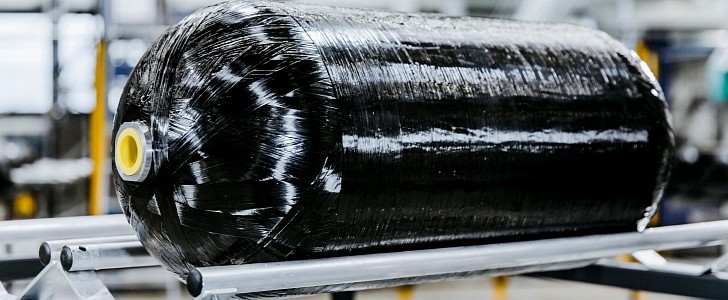FCEVs (fuel cell electric vehicles) face a lot of criticism for their energy efficiency. Automotive designers and engineers may hate them for their hydrogen tanks, which occupy precious space. To tackle that, BMW, Bosch, TesTneT Engineering GmbH, and Hexagon Purus have set a goal: creating hydrogen tanks that fit where a battery pack would.
Although that may seem simple, the huge pressure these tanks have to stand makes it quite a challenge. The existing hydrogen filling stations pump the gas into the current tanks at 700 bar (10,153 psi). If these tanks could fit underneath the car body, electric cars with a battery pack could also use a fuel cell to give electric motors the juice they need. The project was named FlatHyStor by the four companies.
With a budget of only €6 million ($6,85 million at the current exchange rate), the consortium led by BMW plans to present the first tanks for testing by the end of 2022. These prototypes will be part of a joint effort. To be fair, BMW will just say how it wants these tanks to be and in which vehicles they would have to fit.
Hexagon Purus will be the company responsible for developing the tanks and providing the vehicle integration structure. Bosch will be in charge of the tank valves and high-pressure regulator technology. When these components are appropriately integrated and ready for tests, TesTneT Engineering GmbH will take care of them. These tests will validate the tanks and elements according to current regulations in place for them.
If BMW already had such a flat tank (or flat tank pack, since we imagine it will comprise a series of slim tanks placed side by side), it could have presented a version of the i3 or iX3 instead of the iX5 Hydrogen that we saw at the 2021 Munich Motor Show. If the i4 or the iX were already available, they could also benefit from the new component.
If this effort is successful, carmakers may get other options apart from massive battery packs to sell zero-emission vehicles. If a supply chain crisis hits batteries or their raw materials, cars can still be produced if there is a hydrogen fueling network in place. Summing up, these special tanks are something anyone willing to follow automotive industry developments has to have on their radar.
With a budget of only €6 million ($6,85 million at the current exchange rate), the consortium led by BMW plans to present the first tanks for testing by the end of 2022. These prototypes will be part of a joint effort. To be fair, BMW will just say how it wants these tanks to be and in which vehicles they would have to fit.
Hexagon Purus will be the company responsible for developing the tanks and providing the vehicle integration structure. Bosch will be in charge of the tank valves and high-pressure regulator technology. When these components are appropriately integrated and ready for tests, TesTneT Engineering GmbH will take care of them. These tests will validate the tanks and elements according to current regulations in place for them.
If BMW already had such a flat tank (or flat tank pack, since we imagine it will comprise a series of slim tanks placed side by side), it could have presented a version of the i3 or iX3 instead of the iX5 Hydrogen that we saw at the 2021 Munich Motor Show. If the i4 or the iX were already available, they could also benefit from the new component.
If this effort is successful, carmakers may get other options apart from massive battery packs to sell zero-emission vehicles. If a supply chain crisis hits batteries or their raw materials, cars can still be produced if there is a hydrogen fueling network in place. Summing up, these special tanks are something anyone willing to follow automotive industry developments has to have on their radar.





















